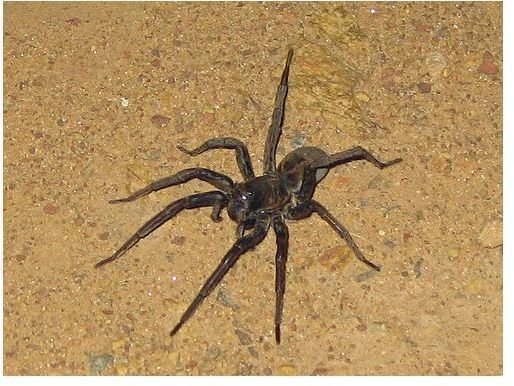Wolf Spider Bite Symptoms
Facts About Wolf Spiders
There are 125 known species of the wolf spider, making it the most common arachnid in the United States. Like most spiders, the wolf spider reproduces in great numbers per litter, which are carried in a sac attached to the female’s abdomen in most species. When the young spiders are ready to hatch, the female opens the sac with her jaws. The offspring will then stay on the female’s abdomen until they grow their first layer of skin, when they will be dispersed aerially.
Wolf spiders have been named because of their propensity for hunting their prey and not because they hunt in packs as this is incorrect. Most wolf spiders hunt by ambush, although some species venture over distances seeking prey. Their excellent eyesight is their strongest hunting feature, yet they cannot distinguish between their usual prey, such as insects and anatomical features of humans, such as fingers. This is usually the cause of most wolf spider bites in humans.
Symptoms of a Wolf Spider Bite
Although wolf spiders release venom when they bite, this does not usually result in necrosis (tissue degeneration). The problems resulting from a wolf spider bite are the result more of trauma from the bite itself, rather than the venom. The wolf spider has very large fangs and the tearing of the skin when they bite is most often the cause of negative symptoms.
The area of the bite will become red and swollen and will be painful. In more serious reactions, the skin may become black. This is more common in children and the elderly, whose immunity to the symptoms is lesser. In some cases, swelling of the lymph nodes may occur, but this is rarely reported. The pain and swelling can last as long as ten days.
Wolf Spider Bite Treatment
Generally speaking, a wolf spider bite in healthy adults will not require immediate medical attention. The area should be washed with soap and water and an antibiotic cream can then be applied to prevent infection. If possible, the bitten area should be elevated to help prevent swelling. This is most applicable in cases where a hand, an arm, or a leg has been bitten. Ice can be applied to reduce swelling and relieve pain and a mild pain killer such as acetaminophen can be taken.
Non-steroidal anti-inflammatory drugs may also be taken to control pain and swelling and antihistamines may be helpful as well in controlling the itching and swelling from the bite itself. Symptoms should begin to dissipate within ten days or less. Children and the elderly should receive medical attention after a wolf spider bite, especially if serious symptoms become evident or if they persist.
Resources and Credit
WolfSpiders.org - Wolf Spiders
Spiderzrule.com - Wolf Spiders
Photo Credit: GregTheBusker
